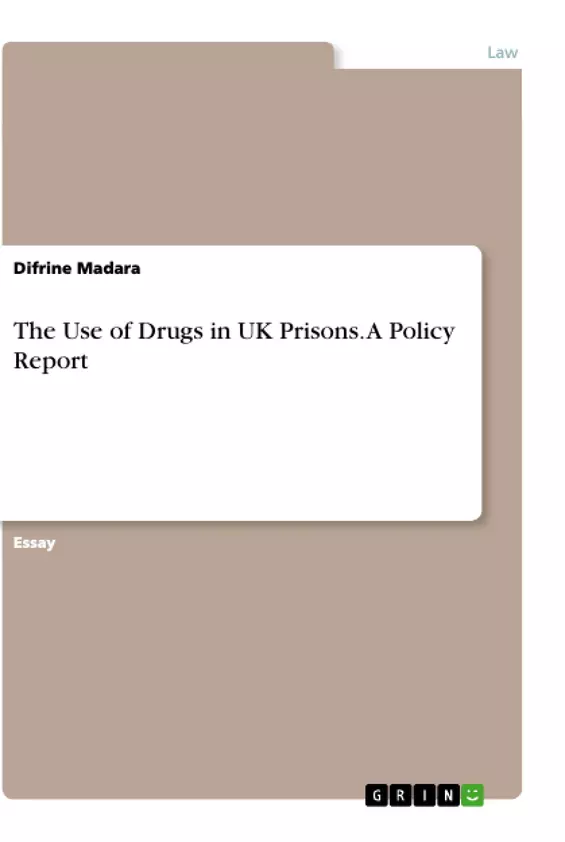This essay is concerned with the question of how the current drug problem in UK prisons can be understood in the light of the current effectiveness of the existing policies and punishments.
This report, therefore, focuses on three main aspects of the issue. Firstly, the author looks at the theoretical background of the existing punishments for criminal offenses such as drug smuggling or trade. Secondly, the author explores the extent of the current situation in the UK prison. That is, the author examines what makes it easier for prisoners in England and Wales to purchase funds, where do they get funds and existence of policy failures.
Finally, the author suggests effective ways of addressing the issue of drug use in UK prisons.
Inhaltsverzeichnis (Table of Contents)
- Policy issue
- Policy background/theoretical overview
- Research findings on the issue
- Current policy
- Policy implications and recommendations
- Conclusion
Zielsetzung und Themenschwerpunkte (Objectives and Key Themes)
This report aims to analyze the issue of drug use in UK prisons, examining its theoretical underpinnings, the current situation, and potential solutions. The report's objectives are to understand the effectiveness of current policies, identify the challenges faced in controlling drug use within prisons, and propose recommendations for addressing the problem.
- Theoretical frameworks for understanding drug use in prisons, including classical and neoclassical theories
- The prevalence of drug use in UK prisons, including types of drugs, methods of smuggling, and the impact on prisoners and prison security
- The effectiveness of current policies and practices in addressing drug use in UK prisons
- Policy implications and recommendations for reducing drug use in UK prisons
Zusammenfassung der Kapitel (Chapter Summaries)
- Policy issue: This chapter introduces the problem of drug use in UK prisons, highlighting the contradiction between the legal status of drugs and their prevalence in prison settings. It sets the stage for a comprehensive analysis of the issue and outlines the report's focus.
- Policy background/theoretical overview: This chapter delves into the theoretical underpinnings of drug use in prisons, exploring classical and neoclassical perspectives on crime and punishment. It examines how these theories can help explain the decision-making processes of prisoners involved in drug smuggling and use.
- Research findings on the issue: This chapter presents research findings on the extent and nature of drug use in UK prisons. It discusses the types of drugs prevalent, the routes of smuggling, and the impact of drug use on prisoners and prison security. It also highlights the increasing use of New Psychoactive Substances (NPS) and the challenges they pose for prison authorities.
Schlüsselwörter (Keywords)
The key themes and concepts explored in this report include drug use, UK prisons, criminal justice, classical and neoclassical theories, punishment, rehabilitation, drug smuggling, New Psychoactive Substances (NPS), policy implications, and recommendations.
- Quote paper
- Difrine Madara (Author), 2019, The Use of Drugs in UK Prisons. A Policy Report, Munich, GRIN Verlag, https://www.grin.com/document/508257



